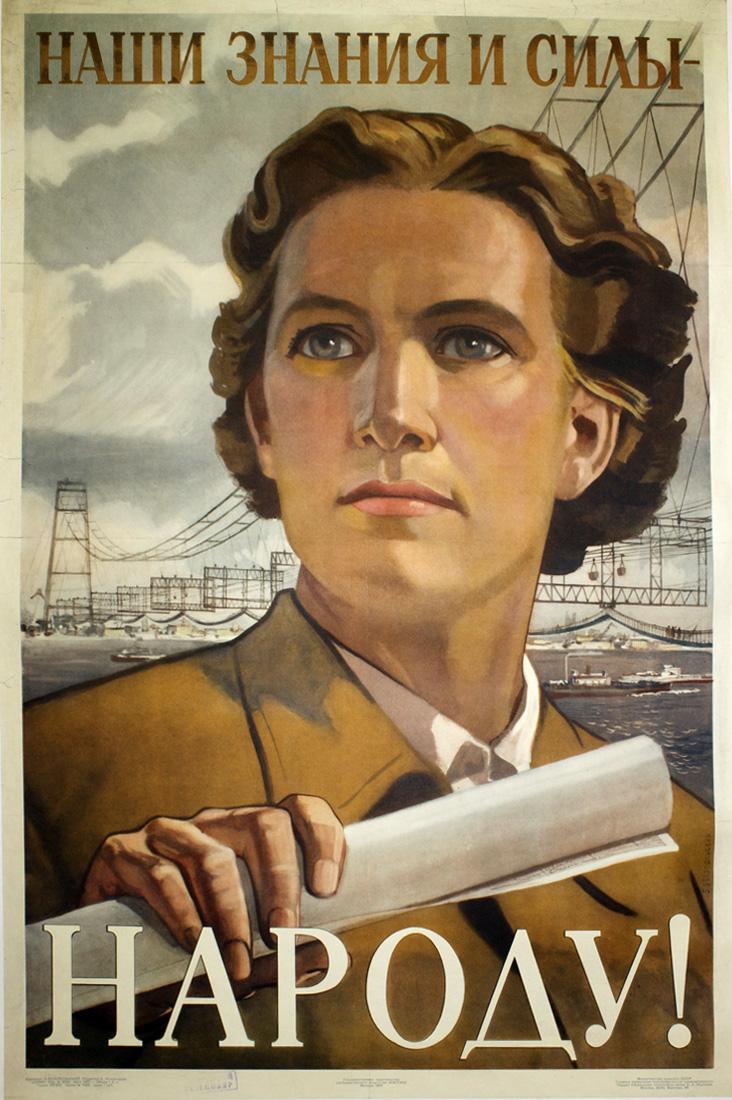
Nuestro saber hacer y nuestra fuerza… ¡El pueblo!
Número de Cartel: PP 117
Tamaño: 36.5x27
Tipo de cartel: Offset
Fecha de publicación: 1955
Editores: Editor E. Povolotskaia
Información técnica: [Approved] October 20, 1955; Publication No. 0306; Volume 1 sheet of paper; Order No. 1029; Price 1 ruble; 1st Department for the Printing Industry
Ediciones: 150,000
Número de Glavlit: Sh06956
En el catologo: PP 117 Workers
Artista: Belopol'skii, Boris Naumovich — Белопольский, Борис Наумович
Boris Naumovich Belopol'skii was a multi-talented artist. While his chief concentration was in graphic art, Belopol'skii was also known as a painter and a monumentalist. A 1928 graduate of the Kharkov Art Institute, he lived in Kharkov until 1941 whereupon he moved to Moscow. During the 1930s the artist began designing posters. His artistic style incorporated photomontage and illustrative realism. Belopol’skii designed posters for Iskusstvo (Art) Publishing House whereby he generated a significant number of titles co...
Leer más...
Imprenta: 1st Exemplary Typography Workshop named for A. A. Zhdanov, Moscow — 1-я Образцовая типография им. А.А. Жданова
The 1st Exemplary Typography Workshop was named in honor of Andrei Alexandrovich Zhdanov (1896-1948), a Soviet military leader and a senior member of the Politburo who died in 1948. Reportedly, Andrei Zhdanov controlled the atomic espionage division of the USSR and he was Josef Stalin's closest confidant. Historically, the 1st Exemplary Typography Workshop began as the Sharapov-Sytin Partnerhip, a printing workshop formed before the Russian Revolution. Ivan Dmitrievich Sytin (1851-1934) was the son of a peasant. ...
Leer más...
Editorial: IzoGiz (State Publishing House of Fine Art), Moscow — Изогиз (Государственное издательство изобразительного искусства), Москва
The history of IzoGiz begins with the formation of Ogiz, the Association of the State Book and Magazine Publishers. In 1930, the Sovnarkom of the Russian Socialist Federative Soviet Republic established Ogiz to centralize publishing under a monopoly in order to eliminate duplication of printed material, to streamline and control publishing production and its output, and to create a base for marketing books, training and technical manuals. In 1931, the Central Committee of the USSR ordered certain ...
Leer más...